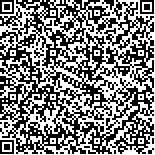下载中心
优秀审稿专家
优秀论文
相关链接
摘要

在油气资源遥感探测中,通过烃渗漏引起的海表面甲烷气浓度异常来探测海底气藏是最直接的方法之一。为了更好地识别海表甲烷异常,提高遥感反演精度,对海表甲烷气含量进行定量光谱分析研究。设计室内甲烷波谱测试平台,获取海水背景下不同含量甲烷高光谱数据为数据,对光谱数据预处理及进行比值导数光谱法,并提取光谱吸收特征参数,对甲烷含量与光谱参数之间进行相关性分析,构建甲烷含量的反演模型。比值导数光谱法确实抑制了海水背景信息,突出了甲烷特征。1650—1664 nm和2180—2210 nm波段范围的光谱参数与甲烷含量相关性显著;其中,波谷、波深、面积、斜率与甲烷含量显著相关。基于2180—2210 nm波段范围建立的波谷、波深、面积、斜率四元回归方程y=-14.356 - 5931.796x1 - 4325.081x2+241.481x3+7531.973x4拟合效果最好,R2为0.9817;且在此波段范围内基于波深建立的单变量甲烷反演模型y = 2047.571x - 9.758,R2为0.9741,比基于其他变量所建立的反演模型效果要好。成功获取了和海水背景下甲烷含量线性相关显著的对应波段和吸收特征,可为利用多/高光谱遥感预测勘探海表面甲烷气浓度提供一定的理论和技术依据。
In the remote sensing exploration of oil and gas resources, seabed gas reservoirs are usually detected through the anomaly of methane concentration on the sea surface caused by hydrocarbon seepage. The remote sensing exploration of hydrocarbon seepage in marine gas resources is currently mostly based on methane absorption characteristics and images. Quantitative spectral analysis of methane content on the sea surface is also insufficient. This study designs laboratory spectral response experiments of methane with different concentrations in seawater background to determine the methane anomaly on the sea surface better and improve the accuracy of remote sensing inversion. This study also attempts to establish an inversion model of methane concentration in seawater background.A methane spectra laboratory test platform was designed to obtain hyperspectral data of different methane contents in seawater background. After spectra preprocessing and derivative of ratio spectroscopy, the spectral absorption characteristic parameters (the valley, wave depth, area, wave width, slope, and SAI) were extracted. The correlation between methane content and spectral parameters was analyzed to compare the ability of parameters to distinguish methane content. The correlation between spectral parameters with high correlation of methane content in selected bands was analyzed to further reduce the amount of data. Finally, the spectral parameters that were highly correlated with methane content and lowly correlated with each other were selected as independent variables and methane content was used as dependent variable to construct the methane content inversion model.In the analysis of methane spectra in seawater background, the derivative of ratio spectroscopy can effectively suppress background information of seawater in the spectra and highlight the methane information. Thus, the curve characteristics of the spectra after derivative of ratio spectroscopy are only related to the content of methane. Moreover, higher methane content corresponds to more obvious characteristics. The correlation between spectral parameters in 1650—1664 nm and 2180—2210 nm with methane content is significantly correlated, which is apparently higher than that in 2300—2320 nm and 2350—2380 nm. The valley, wave depth, area, and slope are also significantly correlated with methane content. Meanwhile, wave width is generally correlated with methane content, and SAI is not correlated with methane content. The quadrivariate regression equation (y=-14.356 - 5931.796x1 - 4325.081x2+241.481x3+7531.973x4) in 2180—2210 nm has the best fitting effect, and R2 is 0.9817. The single variable methane inversion model y = 2047.571x - 9.758 is based on wave depth in this band, and R2 is 0.9741, which is better than that of the inversion model based on other spectral characteristic parameters.The corresponding bands of 1650—1664 nm and 2180—2210 nm and corresponding absorption characteristics (valley, wave depth, area, and slope) with significant linear correlation of methane content in sea water background are successfully obtained. The methane content inversion models with good effect and regression significance are established. They can provide theoretical and technical basis for predicting methane concentration on sea surface by multispectral/hyperspectral remote sensing.

